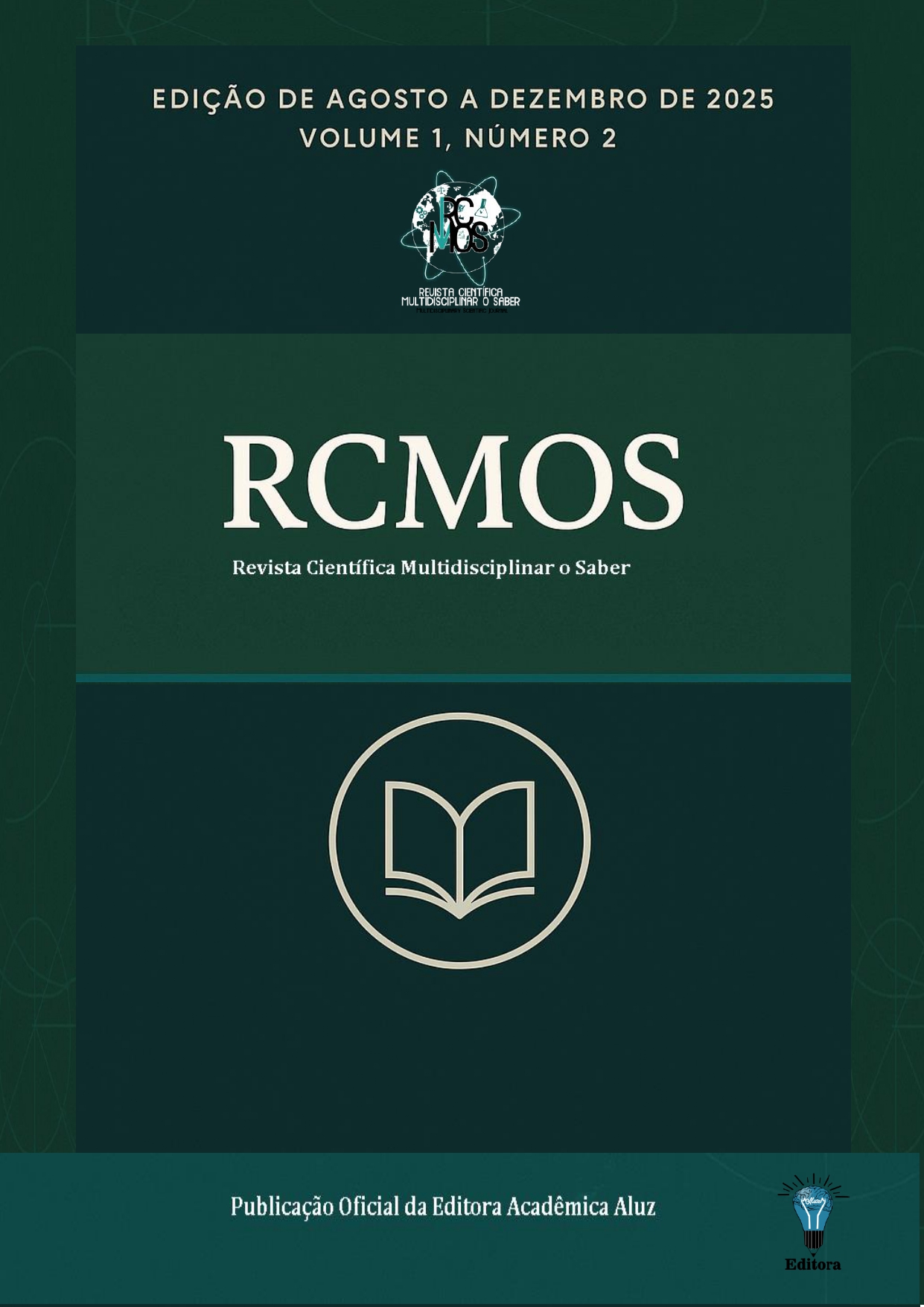The use of artificial intelligence in magnetic resonance imaging and is importance for diagnosis: a literature review
The use of artificial intelligence in magnetic resonance imaging and is importance for diagnosis: a literature review
DOI:
https://doi.org/10.51473/rcmos.v1i2.2025.1537Keywords:
Artificial Intelligence; Magnetic Resonance Imaging; Diagnostic Imaging.Abstract
In recent years, artificial intelligence (AI) has increasingly been applied to medical imaging, with particular promise in magnetic resonance imaging (MRI). This integrative literature review synthesizes published evidence on AI-based approaches for detection, segmentation, classification, and interpretation of MRI studies. Searches were conducted across major scientific databases, including PubMed, MedLine, ACM Digital Library, SciELO, and Google Scholar, to identify studies that evaluate technical performance and clinical applicability of AI methods in MRI. The reviewed literature demonstrates substantial technical advances, such as improvements in image reconstruction and acceleration, noise reduction, lesion segmentation, and automated classification. These advances frequently yield high diagnostic performance metrics and reductions in acquisition or reading time. However, most evidence remains retrospective, single-center, and benchmark-driven, limiting direct translation to routine clinical practice. Key challenges include limited external validation, data heterogeneity, model explainability, regulatory and ethical concerns, and infrastructural barriers to deployment. We conclude that AI holds real potential to enhance MRI workflow efficiency and diagnostic accuracy, but its broader clinical adoption requires prospective multicenter validation, standardized reporting, and further attention to bias, explainability, and infrastructural barriers. Future research should prioritize pragmatic trials and implementation studies that measure clinical and economic impact.
Downloads
References
AVVAL, A. H.; BANERJEE, S.; ZIELKE, J.; KANN, B. H.; MUELLER, S.; RAUSCHECKER, A. M. Applications of artificial intelligence and advanced imaging in pediatric diffuse midline glioma. Neuro-Oncology, v. XX, n. XX, p. 1–15, 2025.
BARROS, J. A. de; GOTO, R. E.; CAPELETI, F. F.; LODI, F. R.; NOBESCHI, L. Inteligência artificial na radiologia: aplicações e impactos na ressonância magnética e tomografia computadorizada. Revista Científica Cleber Leite, [S.l.], v. 2, n. 1, p. 1–4, 2025. DOI: https://doi.org/10.48051/2965.4513reccl.v2i1.29
BUSHBERG, J. T. et al. The Essential Physics of Medical Imaging. 3. ed. Philadelphia: Lippincott Williams & Wilkins, 2012.
CÁRDENAS, C. E. et al. Clinical applications of artificial intelligence in radiology. British Journal of Radiology, v. 96, n. 1150, 20221031, 2022. DOI: https://doi.org/10.1259/bjr.20221031
ERICKSON, B. J. et al. Machine Learning for Medical Imaging. Radiographics, v. 37, n. 2, p. 505–515, 2017. DOI: https://doi.org/10.1148/rg.2017160130
GEERTRUIDA, M. et al. Promises of artificial intelligence in neuroradiology: a systematic technographic review. Neuroradiology, v. 62, n. 10, p. 1265–1278, out. 2020. DOI: https://doi.org/10.1007/s00234-020-02424-w
GOODFELLOW, I. et al. Generative adversarial networks. Communications of the ACM, v. 63, n. 11, p. 139–144, 2020. Republicado de NIPS 2014. DOI: https://doi.org/10.1145/3422622
GORE, J. C. Artificial intelligence in medical imaging. Magnetic Resonance Imaging, 2018. Disponível em: https://doi.org/10.1016/j.mri.2019.12.006 DOI: https://doi.org/10.1016/j.mri.2019.12.006
.
HAGE, M. C. F. N. S.; IWASAKI, M. Imagem por ressonância magnética: princípios básicos. Ciência Rural, Santa Maria, v. 39, n. 4, p. 1287–1295, jul. 2009. DOI: https://doi.org/10.1590/S0103-84782009005000041
HAMET, P.; TREMBLAY, J. Artificial intelligence in medicine. Metabolism Clinical and Experimental, v. 69, p. S36–S40, 2017. DOI: https://doi.org/10.1016/j.metabol.2017.01.011
HUANG, H. et al. Deep Learning to Simulate Contrast-Enhanced MRI for Evaluating Suspected Prostate Cancer. Radiology, v. 314, n. 1, e240118, jan. 2025. DOI: https://doi.org/10.1148/radiol.240238
JO, T. et al. Deep Learning in Neuroradiology: A Systematic Review of Current Algorithms and Approaches for the New Wave of Imaging Technology. Radiology: Artificial Intelligence, v. 2, n. 2, e190026, mar. 2020. DOI: https://doi.org/10.1148/ryai.2020190026
KHAN, A. R.; SABA, T. (Ed.). Explainable Artificial Intelligence in Medical Imaging: Fundamentals and Applications. New York: Auerbach Publications, 2025. DOI: https://doi.org/10.1201/9781032626345
KIM, J.-M.; HA, S. M. Clinical Application of Artificial Intelligence in Breast MRI. Journal of the Korean Society of Radiology, v. 86, n. 2, p. 245–258, jan. 2025. DOI: https://doi.org/10.3348/jksr.2025.0012
KOCH, K. M.; LI, W.; MORITZ, C. H. Magnetic resonance imaging: physical principles and applications. Annual Review of Biomedical Engineering, v. 23, p. 25–52, 2021.
LEE, J. H. et al. Enhancing Radiologist Productivity with Artificial Intelligence in Magnetic Resonance Imaging (MRI): A Narrative Review. Diagnostics, v. 15, n. 9, 1146, abr. 2025. DOI: https://doi.org/10.3390/diagnostics15091146
MANN, R. M. et al. Use of an Artificial Intelligence System to Improve Radiologists’ Performance in Differentiating Benign and Malignant Breast Lesions at DCE-MRI. Radiology, v. 296, n. 3, p. 521–529, set. 2020.
MENDES, K. D. S.; SILVEIRA, R. C. de C. P.; GALVÃO, C. M. Revisão integrativa: método de pesquisa para a incorporação de evidências na saúde e na enfermagem. Texto & Contexto Enfermagem, v. 17, n. 4, p. 758–764, 2008. Disponível em: https://doi.org/10.1590/S0104-07072008000400018 DOI: https://doi.org/10.1590/S0104-07072008000400018
.
MENESES, N. M. Inteligência artificial na ressonância magnética: uma revisão bibliográfica acerca das aplicações e impactos no diagnóstico por imagem. 2024. Disponível em: http://repositorio.utfpr.edu.br/jspui/handle/1/38005
.
MORAN, C. J. Editorial for “Enabling AI‐Generated Content for Gadolinium‐Free Contrast‐Enhanced Breast Magnetic Resonance Imaging”. Journal of Magnetic Resonance Imaging, v. 61, n. 3, p. 734–735, ago. 2024. DOI: https://doi.org/10.1002/jmri.29535
PEREIRA, D. F. et al. Inteligência artificial na ressonância magnética: uma revisão bibliográfica acerca das aplicações e impactos no diagnóstico por imagem. Portal eduCAPES, 2024. Disponível em: http://educapes.capes.gov.br/handle/capes/1111263
.
PINKER, K. et al. Ethical challenges of artificial intelligence in neuroradiology. Frontiers in Radiology, v. 3, 1149461, 2023.
PINKER, K.; GELL, T. Y. Ethical Challenges of Artificial Intelligence in Neuroradiology. CUNY Academic Works, 2023.
RAHMAN, M. M. Generative AI in Medical Imaging: Applications, Challenges, and Ethics. ResearchGate, ago. 2024.
Revolutionizing cardiac imaging: a scoping review of artificial intelligence in echocardiography, CTA, and cardiac MRI. Cureus, v. 17, n. 1, e71314, jan. 2025.
RUITENBEEK, H. C. et al. Artificial intelligence in musculoskeletal imaging: realistic clinical applications in the next decade. Skeletal Radiology, v. 53, n. 9, p. 1849–1868, 2024. DOI: https://doi.org/10.1007/s00256-024-04684-6
SANKAR, H. et al. Role of artificial intelligence in magnetic resonance imaging-based detection of temporomandibular joint disorder: a systematic review. British Journal of Oral and Maxillofacial Surgery, S0266-4356(24)00549-7, dez. 2024.
SHAHABEDIN, N. Medical Imaging and Computational Image Analysis in COVID-19 Diagnosis: A Review. Journal of Digital Imaging, v. 33, p. 1–13, 2020.
SHIN, H. C. et al. Deep convolutional neural networks for computer-aided detection: CNN architectures, dataset characteristics and transfer learning. IEEE Transactions on Medical Imaging, v. 35, n. 5, p. 1285–1298, 2020. DOI: https://doi.org/10.1109/TMI.2016.2528162
TRIMBLE, C. L. et al. Healthcare and Artificial Intelligence. Springer, 2019.
VAN DER VORST, J. R. et al. Promises of artificial intelligence in neuroradiology: a systematic technographic review. Neuroradiology, v. 62, n. 10, p. 1265–1278, 2020. DOI: https://doi.org/10.1007/s00234-020-02424-w
WESTBROOK, C.; TALBOT, J. MRI in Practice. 5. ed. Hoboken: Wiley-Blackwell, 2018.
WU, C. et al. A critical assessment of artificial intelligence in magnetic resonance imaging of cancer. npj Imaging, v. 3, n. 1, p. 1–12, abr. 2025. DOI: https://doi.org/10.1038/s44303-025-00076-0
YI, G. et al. GAN review: Models and medical image fusion applications. ResearchGate, out. 2025.
ZHU, W. et al. Artificial intelligence in radiology. European Journal of Nuclear Medicine and Molecular Imaging, v. 51, p. 1–4, 2024.
ZHU, Y. et al. Applications of artificial intelligence in breast MRI: a systematic review of the literature from 2008 to 2018. American Journal of Roentgenology, v. 212, n. 4, p. 933–943, 2019. Republicado em 2022.
Downloads
Published
Issue
Section
Categories
License
Copyright (c) 2025 Ana Beatriz Barreto Jorge, Hiago Ferrari Santos, Andressa Dalólio Valente , Nathalia Cristine Santos Messias Chiquito (Autor)

This work is licensed under a Creative Commons Attribution 4.0 International License.












